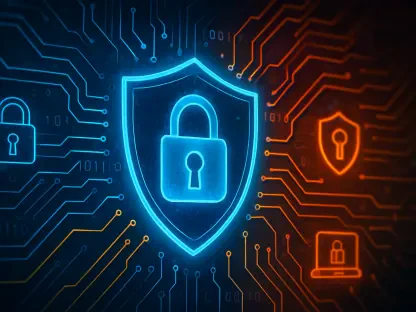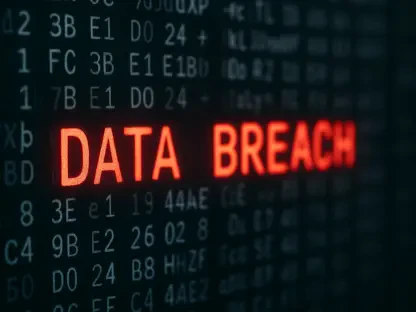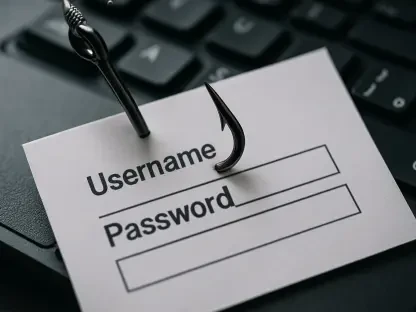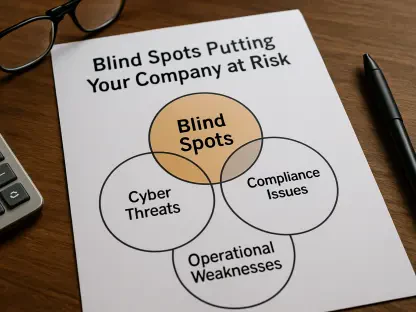As digital landscapes expand, the sophistication of cyber threats has reached unprecedented levels, with consumers across the globe losing billions of dollars to online scams and attacks this year. The rapid evolution of criminal tactics has made staying secure more challenging than ever, as hackers exploit advanced technologies and personal data with alarming precision. From artificial intelligence crafting eerily convincing scams to malware silently stealing sensitive information, the risks are diverse and growing. Awareness remains the cornerstone of defense, empowering individuals to recognize and respond to these dangers effectively. This discussion delves into the most pressing cyber threats currently impacting users, explores how these risks might develop in the coming years from 2025 onward, and offers actionable strategies to safeguard personal and financial security in an increasingly connected world. By understanding the nature of these threats, everyone can take proactive steps to mitigate vulnerabilities and protect against the next wave of digital crime.
1. AI-Powered Scams: The New Frontier of Deception
The rise of artificial intelligence has transformed the scam landscape, enabling cybercriminals to create highly personalized and realistic communications that deceive even the most cautious individuals. Scammers now harness AI to craft messages, videos, and phone calls that appear authentic, often pulling personal details from social media to add credibility. Tactics such as hyper-realistic phishing emails—free of the clumsy errors of the past—along with voice clones and deepfake videos mimicking trusted figures, have become disturbingly common. Multilingual scams, tailored to a victim’s native language, further amplify their effectiveness. To stay safe, it’s crucial to pause before reacting to urgent messages, verify the sender through trusted channels, and scrutinize for subtle inconsistencies in audio or visuals that might reveal a fake. Staying vigilant against these sophisticated ploys is essential in today’s digital environment.
Looking ahead, security experts anticipate an increase in autonomous scams—systems that operate without human intervention, sending messages and responding as if human. This evolution could make detecting fraud even harder, as these AI-driven schemes adapt in real-time to user behavior. The personalization of attacks, fueled by vast amounts of online data, means that anyone can be a target, regardless of tech-savviness. Protective measures include double-checking the legitimacy of unexpected communications by reaching out directly to the supposed sender via a known contact method. Additionally, being mindful of odd phrasing or visual glitches can help identify AI-generated content. As these threats grow from 2025 to the coming years, adopting a skeptical mindset toward unsolicited interactions will be a key defense mechanism against falling prey to these advanced deceptions.
2. Ransomware and Data-Stealing Malware: Silent but Deadly
Ransomware continues to pose a severe threat by locking critical files and demanding payment for access, crippling both individuals and organizations. Alongside this, a more insidious danger has emerged in the form of infostealers—malware that quietly infiltrates systems to extract passwords, banking details, and other sensitive data before disappearing without a trace. These dual threats exploit vulnerabilities in outdated software and weak security practices, often catching victims off guard. Protection starts with keeping all devices updated to ensure the latest security patches are applied, closing gaps that hackers might exploit. Using strong, unique passwords for every account limits the damage if one is compromised, while enabling multi-factor authentication (MFA) adds a vital extra layer of defense against unauthorized access.
Beyond basic precautions, understanding the stealthy nature of infostealers is critical, as they often operate undetected until significant harm is done. Regular software updates are not just a routine task but a frontline defense against known exploits that malware targets. Password diversity ensures that a breach in one area doesn’t cascade across all accounts, and MFA acts as a barrier even if credentials are stolen. Cybersecurity experts stress that these threats will likely persist and evolve, with attackers refining their methods to bypass traditional defenses. From 2025 onward, staying proactive by adopting these habits can significantly reduce the risk of falling victim to ransomware or data theft, preserving both personal security and peace of mind in an era of relentless digital attacks.
3. Cloud Security and Smart Device Vulnerabilities: Hidden Risks
With personal data increasingly stored in cloud services and managed through smart devices like doorbells and thermostats, the attack surface for cybercriminals has expanded dramatically. Hackers exploit misconfigured cloud accounts—often due to lax privacy settings—and unsecured smart devices to gain entry into home networks, accessing sensitive information. Such breaches can lead to identity theft, financial fraud, or tailored phishing attacks using exposed data. To reduce exposure, securing home Wi-Fi with a strong, unique password and avoiding default settings is a fundamental step. Additionally, reviewing privacy settings on cloud services to ensure they are not set to “public” and keeping smart devices updated with the latest firmware can patch potential security flaws.
The risks tied to cloud and smart device vulnerabilities are not just theoretical but a growing reality as more aspects of daily life move online. Misconfigured accounts can inadvertently reveal personal details like addresses or financial records, which attackers then weaponize. Smart devices, often overlooked in security protocols, serve as entry points if not properly protected. Steps like changing default passwords immediately upon setup and regularly updating router firmware are practical ways to fortify defenses. As reliance on these technologies grows from 2025 forward, the importance of these measures cannot be overstated. Staying diligent about configuration and updates will help safeguard against breaches that could compromise both privacy and security in an interconnected world.
4. Traditional Scams: Old Tricks with New Twists
Despite the rise of high-tech threats, traditional scams such as phishing emails, fake tech support calls, and romance frauds remain a significant drain on personal finances, costing billions annually. These classic cons have gained a new edge through personalization, with scammers using leaked data or social media insights to craft messages that seem legitimate and targeted. This makes them harder to spot, especially for vulnerable groups like seniors. Staying secure involves being cautious about personal information shared online, as oversharing can provide scammers with material to exploit. Educating family and friends about common tactics and reporting scam attempts to banks or fraud authorities can also help protect the wider community from these persistent dangers.
The enduring success of traditional scams lies in their adaptability, blending old methods with modern data to deceive victims effectively. Phishing emails now often mimic trusted entities with alarming accuracy, while tech support and romance scams prey on trust and emotion. Beyond limiting online exposure, spreading awareness among peers, particularly those less familiar with digital risks, is a powerful tool in curbing these frauds. Reporting incidents ensures that authorities can track and combat circulating scams, potentially preventing others from falling victim. As these threats continue to evolve from 2025 into the future, maintaining skepticism toward unsolicited contact and fostering a culture of shared knowledge will remain vital in reducing the impact of these time-tested yet still potent schemes.
5. Identity Theft: Evolving Beyond Traditional Methods
Identity theft has taken a sophisticated turn, with scammers now capable of faking biometric data such as facial recognition or voice prints, undermining once-reliable security measures. This development means that systems relying solely on biometrics are no longer foolproof, prompting the potential rollout of multi-layered verification tools to enhance protection. Victims may face severe consequences, from financial loss to reputational damage, as stolen identities are used for fraud. To stay ahead, regularly monitoring credit reports and bank statements for unauthorized activity is essential. Setting up alerts for suspicious transactions and opting for services with advanced, multi-step verification processes can further mitigate the risks of identity compromise in this new era of digital crime.
The implications of advanced identity theft are profound, as attackers exploit cutting-edge technology to bypass traditional safeguards. Biometric spoofing represents a significant leap in criminal capability, necessitating a shift toward more robust security frameworks. Beyond monitoring financial accounts, enabling alerts provides an early warning system for unusual activity, allowing for swift action. Choosing platforms that integrate multiple verification methods adds complexity for hackers attempting to gain access. As identity theft tactics grow more intricate from 2025 onward, adopting these proactive strategies will be crucial in protecting personal information. Staying informed about emerging security tools and maintaining vigilance over account activity can make a substantial difference in thwarting these smarter, more invasive threats.
6. Building Resilience Against Digital Dangers
Reflecting on the landscape of cyber threats, it’s evident that the challenges faced over recent times demanded heightened awareness and proactive measures to combat increasingly sophisticated attacks. Criminals adapted swiftly, leveraging technologies like AI and exploiting vulnerabilities in cloud systems and smart devices, while traditional scams persisted with renewed vigor. Ransomware and identity theft also evolved, testing the limits of existing defenses and underscoring the need for robust security habits. Each of these threats left a mark, reminding users of the importance of staying informed and prepared in a rapidly shifting digital environment.
Moving forward, building resilience against these digital dangers hinges on adopting consistent, practical steps to secure personal data. Prioritizing strong passwords, enabling multi-factor authentication, and keeping software updated are foundational actions that can thwart many attacks. Regularly reviewing privacy settings and monitoring accounts for suspicious activity offer additional layers of protection. As cybercriminals refine their approaches, exploring emerging security tools and fostering a mindset of skepticism toward unsolicited interactions will be key. By committing to these strategies, individuals can navigate the digital world with greater confidence, staying ahead of evolving risks.









